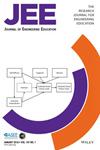Are MOOCs a new way of learning in engineering education in light of the literature? A systematic review and bibliometric analysis
Abstract
Background
Massive open online courses (MOOCs) have gained popularity as a form of distance education, highlighting the need for additional research. Various studies have systematically examined scholarly research on MOOCs. However, the reviewed academic publications on the use of MOOCs in engineering education are limited.
Purpose/Hypothesis(es)
This study aims to examine the implementation of MOOCs in engineering education using systematic review and bibliometric analysis methods.
Design/Method
This study examines 68 studies from the Web of Science database that fall within the scope of the systematic review and 257 studies for bibliometric analysis.
Results
Since 2018, there has been a growing number of studies exploring the uses of MOOCs in engineering education. The quantitative research method is the most preferred, while the mixed method is the least preferred. The study found that using MOOCs in engineering education resulted in positive student perceptions and satisfaction. However, the lack of interactivity between learners and instructors or among learners was the most frequently reported problem. Moreover, the bibliometric analysis indicates that reviewed studies extensively explore learners' engagement, interactions, and feedback processes. Recently, academic research focused on sentiment analysis, deep learning, educational technology, machine learning, and text mining.
Conclusions
There is a need for further investigation into utilizing MOOCs in engineering education. This study's evaluation of MOOCs' pros and cons yields essential insights for optimizing their use in engineering education. By leveraging the positive aspects outlined in the study, educators can enhance engineering students' satisfaction and participation in MOOCs. These findings offer a valuable resource for researchers exploring MOOC-related topics in engineering education.

 求助内容:
求助内容: 应助结果提醒方式:
应助结果提醒方式:


